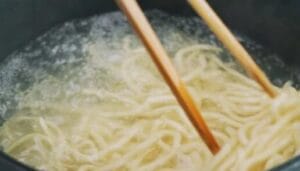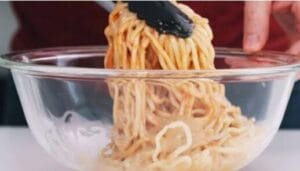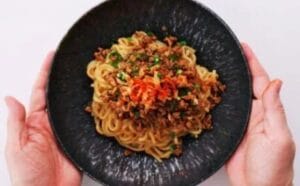As I sit here on this chilly autumn evening, a familiar craving creeps in – the longing for a piping hot bowl of ramen. But not just any ramen – a deliciously spicy, nutty, sesame-infused Japanese delight called Shirunashi Tantanmen.
This soupless ramen has captured my tastebuds ever since I first tried it during a trip to Hiroshima a few years ago. I still fondly remember that initial spoonful – the tender noodles enveloped in the rich, creamy sesame sauce, accented by a gentle heat that left me wanting more.
Over the years I’ve tried, sometimes unsuccessfully, to recreate that magical dish at home. Some attempts ended up too bland while others set my mouth on fire! But after much trial and error, I’ve finally perfected my very own Shirunashi Tantanmen recipe, one that transports me right back to that little ramen shop in Japan.
And today, I can’t wait to share this beloved recipe so that you too can enjoy a mouthwatering bowl of spicy Japanese deliciousness! From the aroma of sautéed garlic and ginger, to the satisfaction of that first slippery noodle coated in sweet and spicy sauce, this quick and easy dish is sure to warm you up, body and soul.
So grab your chopsticks and join me on this tasty adventure! In just 30 short minutes, you’ll be slurping up bowlfuls of cozy comfort.
Shirunashi Tantanmen Recipes
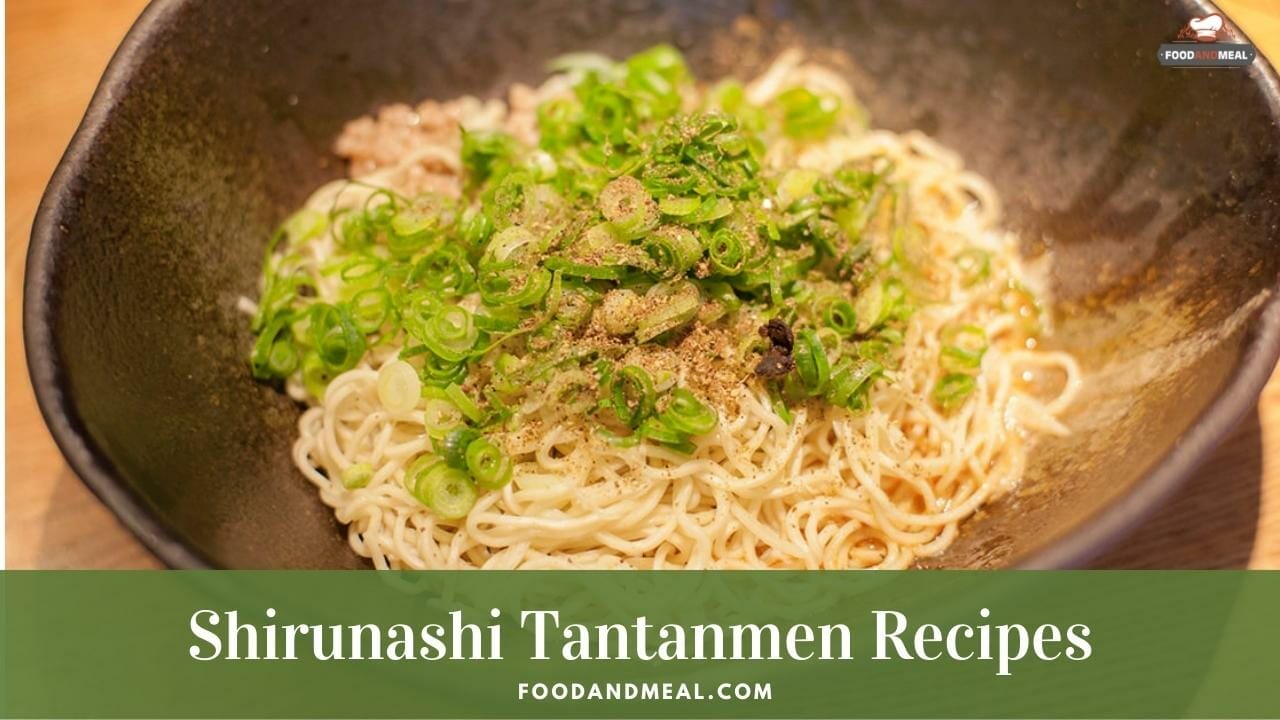
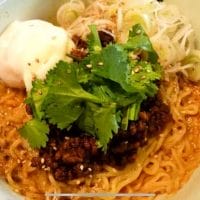
Shirunashi Tantanmen
Equipment
Ingredients
- ½ cup Sesame Paste
- ½ cup Chile Oil
- ¼ cup Shoyu Tare
- 1⅓ pounds noodles fresh, such as Chukasuimen
- 2 cups Niku Soboro
- Negi
Instructions
- In a medium mixing bowl, combine the sesame paste, chile oil, and tare.

- With all your ingredients ready to go, bring a large pot of water to a boil over medium-high heat. Cook the noodles. Ramen that has been cut to a standard thickness (about 1 mm) will cook in 1 to 2 minutes.

- Drain the noodles, taking care to shake off as much excess water as you can. Carefully place some noodles in each ramen bowl. Add the sesame-paste mixture and toss to mix.

- Top with ½ cup of niku soboro and a sprinkle of negi.

- Mix well before eating.

Video
Notes
Nutrition
© Food And Meal
This website provides approximate nutrition information for convenience and as a courtesy only. Nutrition data is gathered primarily from the Spoonacular Database, whenever available, or otherwise other online calculators.
Crafting Shirunashi Tantanmen Using a Pressure Cooker
When preparing Shirunashi Tantanmen using a pressure cooker, one can expect an enhancement in flavor and texture. The pressure cooker allows the components of the sauce—such as ground meat, aromatics like garlic and ginger, and various seasonings including soy sauce, sesame paste, and chili oil—to meld together in a harmonious blend. The high-pressure environment also tenderizes the meat more quickly than traditional methods while infusing it with the spices and seasonings, leading to a mouthwatering depth of flavor.
The beauty of using a pressure cooker for this dish lies in its efficiency and ability to intensify flavors in a short amount of time. This can be particularly useful for those who wish to enjoy the robustness of Shirunashi Tantanmen but may not have the luxury of extensive prep time.
What is Shirunashi Tantanmen ?
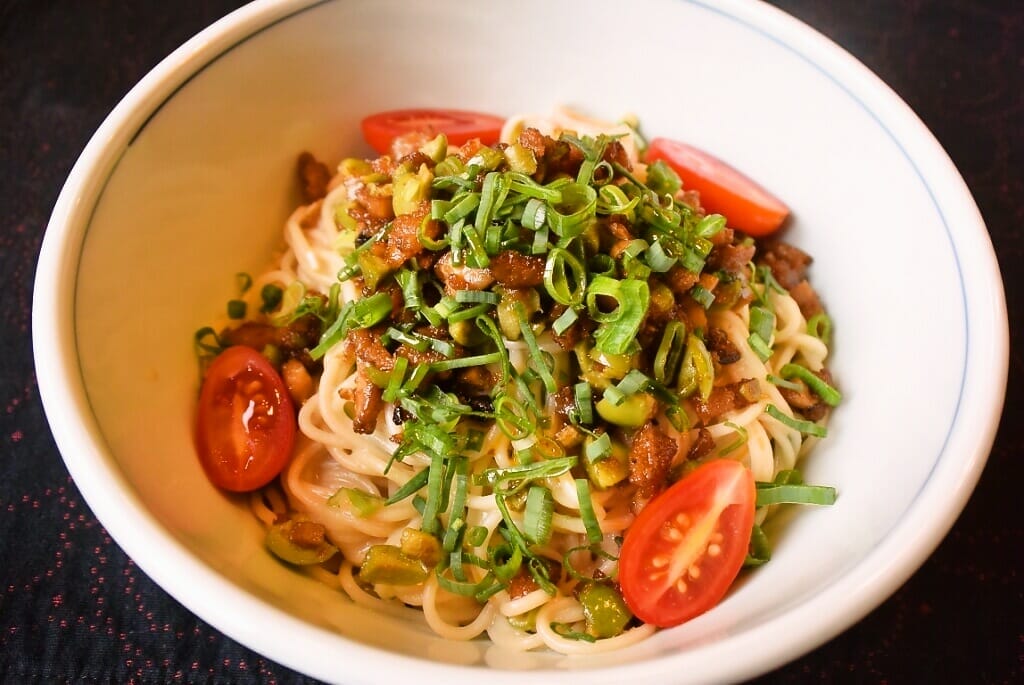
If you’re in Japan, be sure to try Shirunashi Tantanmen. This traditional dish combines noodles, a broth, and sesame seeds in a bowl. The dish is made with a small amount of soy milk that makes it light and tasty. While it doesn’t have the deep savory flavor of other tantanmen, it is still delicious and a great choice for a light lunch or snack.
Shirunashi Tantanmen is a limited-time menu at Kairikiya. It has been around for over a century and is an extremely popular Japanese dish. It is an extremely nutritious, filling meal that is made of noodles, meat, and vegetables. In addition to being a great choice for a healthy lunch, tan ramen is also great for people who want a light, quick meal.
The original Japanese ramen recipe is based on the Chinese dandan mian. This Japanese style tantanmen is served in a spicy soup with sesame paste. This version is popular with vegans and vegetarians. The dish is also available in American and English versions. It is a popular Japanese takeout restaurant. It is a great way to get your fix of ramen in the U.S.
The name of the dish translates to’soupless noodles’. The bowl contains a small amount of broth mixed with noodles and seasonings. The noodle soup itself has a rich and savory flavor that is reminiscent of a hearty lasagna. This limited-time menu can be found at select locations in Hiroshima and Tokyo. It is also available at food court stores across the country.
The broth used for this version is light and flavorful. It contains ingredients like peanut powder, chilli oil, and soy milk. The noodle soup itself is delicious and has a good amount of spice. If you are looking for a healthy, filling, hearty meal, try the tantanmen from Shirunashi. While it’s not a health food, it’s certainly worth trying.

Unlike the soupy noodle dish, tsukemen is served with a bowl of soup that can be used as a dipping sauce. Hence, it’s not served with a traditional soup, but with a separate bowl of soup. The broth is concentrated and is highly seasoned. The broth coats the noodles and clings to the noodle. Therefore, tsukemen is considered a light meal.
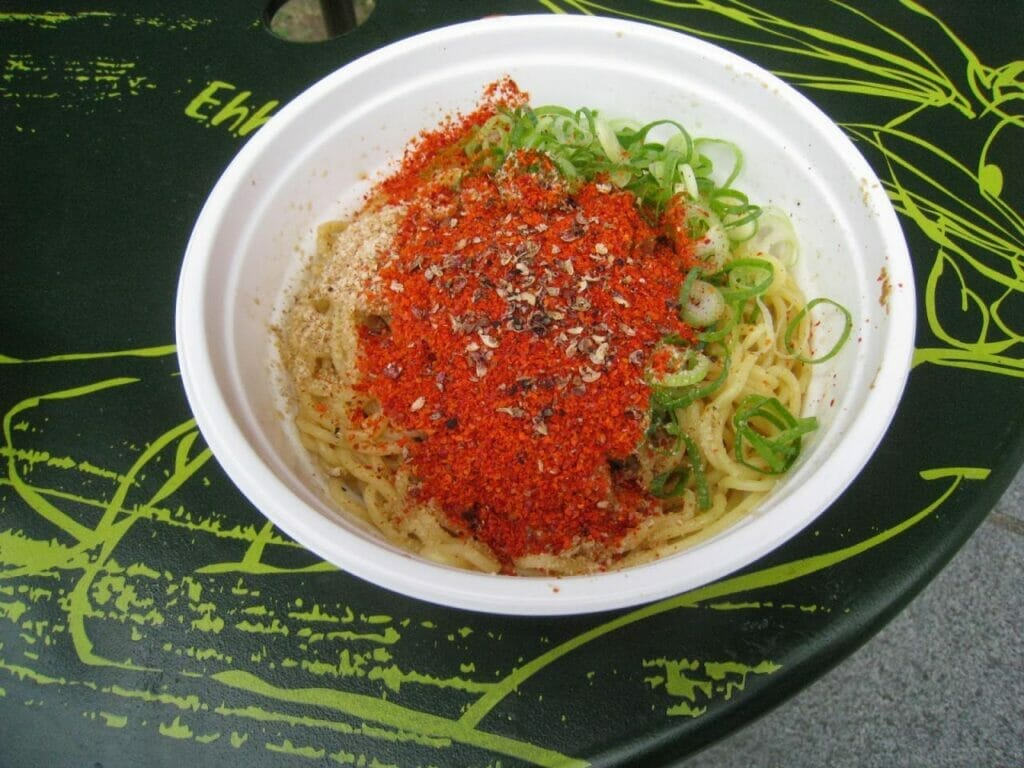
Tips And Tricks
Cooking Tips for Shirunashi Tantanmen

The key to its success lies in the balance of its components. Opt for firm noodles that can embrace the rich sauce, which should start with a fragrant base of garlic and ginger, followed by the warmth of toasted spices like Sichuan peppercorns.
The sauce’s nuttiness, achieved through sesame paste or peanut butter, should be balanced carefully to complement the heat without overwhelming it. A touch of sweetness from sugar or honey adds depth, while soy sauce or miso imparts umami, tying the flavors together beautifully.
Toppings add color and freshness, with minced pork, green vegetables, and herbs like scallions or cilantro. Each bite of Shirunashi Tantanmen is an adventure, with the tingle of spices, the richness of the sauce, and the savory meat creating a delightful experience. It’s a dish that invites personalization and experimentation, making cooking it as enjoyable as eating it.
The Art of Serving Shirunashi Tantanmen
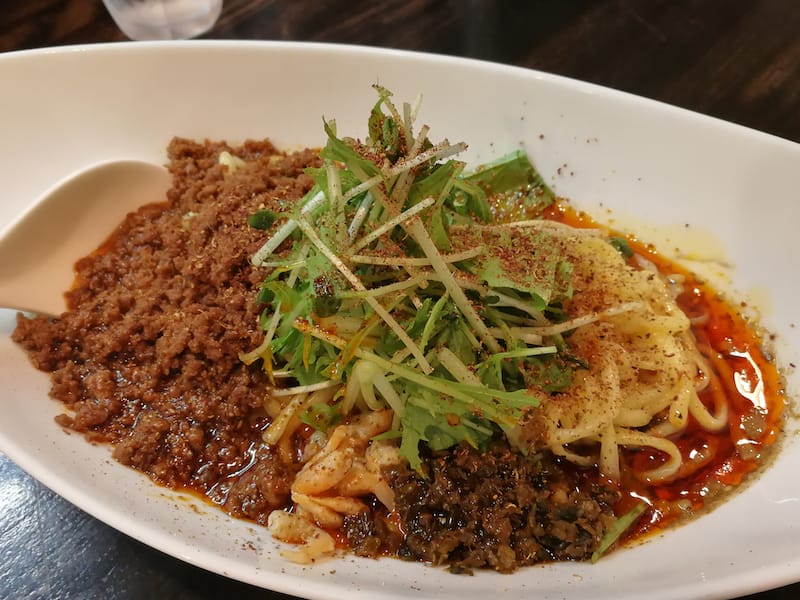
- Gyoza (Japanese pan-fried dumplings) – The crispy, pan-fried skin and flavorful pork filling would contrast nicely with the creamy, spicy noodles.
- Edamame (Boiled soybeans) – These nutty, salty soybeans make a nice palate cleanser between bites of the rich noodle dish.
- Karaage (Japanese fried chicken) – Some crunchy, fried chicken would add another texture to make a well-rounded meal.
- Miso soup – This traditional Japanese soup with dashi, tofu, and seaweed would help cut the heat from the tantanmen.
- Yakitori (Grilled chicken skewers) – Alternating bites of the skewers with the noodles would make for a tasty combination.
- Onigiri (Rice balls) – The plain rice in onigiri balances out the strong flavors of the tantanmen.
- Daifuku (Sticky rice cakes) – The sweet Japanese treat makes a perfect dessert after the spicy main dish!
FAQs on Crafting Shirunashi Tantanmen

In my culinary pursuits, I’ve often found that every dish comes with its own set of questions. Shirunashi Tantanmen, while relatively straightforward, does have nuances that chefs, both budding and experienced, might ponder:
1. Can I use a different type of noodle?
Certainly! While ramen noodles are traditional, feel free to experiment with udon, soba, or even spaghetti for a fusion twist.
2. How spicy should the dish ideally be?
Shirunashi Tantanmen usually has a kick, but the spice level is truly subjective. Adjust according to your preference, but remember, it’s easier to add spice than to remove it.
3. What protein alternatives can I use?
Tofu, tempeh, or even thinly sliced seitan work beautifully. If you’re not strictly vegetarian, shrimp or thinly sliced chicken are also delicious additions.
4. I don’t have all the ingredients. Can I still make it?
Absolutely! While certain ingredients enhance the dish’s authenticity, feel free to improvise with what you have. Sometimes, the most delicious versions are born from innovation!
5. How do I store leftovers?
Place any leftovers in an airtight container and refrigerate. They should be consumed within 2-3 days for the best flavor and texture. When reheating, a quick toss on the stove works best.
6. What is tantanmen broth made of?
Tantanmen broth typically consists of a rich and spicy base made with ingredients such as chicken or pork broth, soy sauce, sesame paste, garlic, ginger, and chili oil. The broth is known for its bold and flavorful profile.
7. What is Japanese instant tantanmen?
Japanese instant tantanmen refers to a convenient and quick version of the traditional tantanmen dish that can be prepared easily at home. It usually comes in the form of instant noodles with a pre-packaged seasoning mix, allowing for a speedy and convenient way to enjoy tantanmen without the need for extensive preparation.
8. What is tantanmen in China?
Tantanmen, also known as “dan dan noodles,” is a Chinese dish originating from Sichuan cuisine. It typically consists of Chinese wheat noodles served with a spicy, savory sauce containing minced pork, preserved vegetables, and chili oil. The dish may also be garnished with chopped peanuts or sesame seeds.
9. What is the Vietnamese version of ramen?
The Vietnamese version of ramen is often referred to as “Phở.” Phở is a Vietnamese noodle soup consisting of broth, rice noodles, and meat, usually beef or chicken. It is flavored with aromatic herbs and spices, making it a popular and comforting dish in Vietnamese cuisine.
Conclution
As I slurp up the last few spoonfuls of my homemade Shirunashi Tantanmen, warmth and contentment wash over me. This soul-soothing bowl of spicy sesame noodles has hit the spot, transporting me back to that little ramen shop in Hiroshima.
I hope you’ll take this recipe from Food and Meal and make it your own – adjusting the spices to suit your tastes, adding your favorite protein or vegetables, and garnishing with a sprinkle of scallions. Savor the aromas as it simmers, then dig into a steamy, slippery tangle of noodles cloaked in nutty, creamy sauce.
Let the subtle heat bloom across your palate while noodles glide smoothly over your tongue. And as you tip back the bowl to drink in the last drops, I hope you’ll be planning your next batch of this magnificent Shirunashi Tantanmen.
This is just one of many delicious and simple Japanese recipes you can find on Food and Meal. Be sure to browse our extensive recipe collection for your next culinary adventure! From ramen to sushi and everything in between, we’ve got quick, easy, authentic Japanese recipes to suit any palette.
I'm James F Anderson, a noted sous chef from London and a Le Cordon Bleu alumnus. My career began in a Michelin-starred Parisian eatery, where my blend of classic and contemporary cooking, using seasonal ingredients, earned accolades. Recognized in culinary publications and on cooking shows, I’m committed to mentoring aspiring chefs and delivering memorable dining experiences, marking me as a standout talent in the culinary world.





